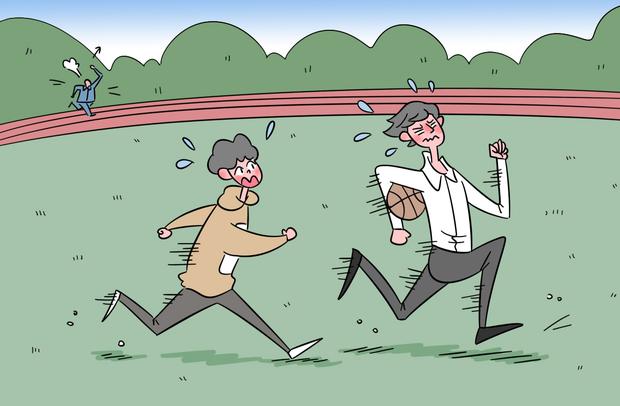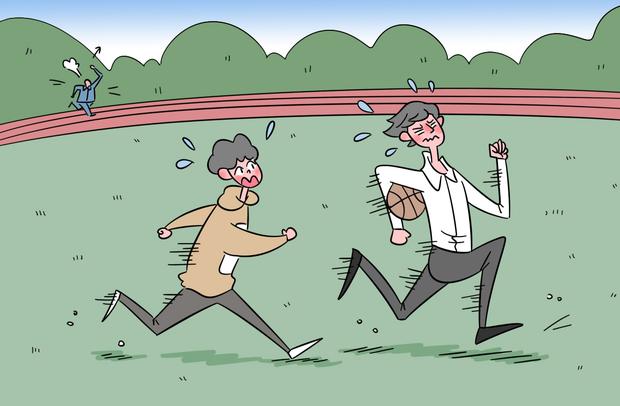英语时态归纳 有哪些时态
2021-03-28 16:14:21文/李文源英语中的时态问题是语法的一个重点,小编今天跟大家分享一下英语时态归纳,来看看吧!

英语时态归纳
一、一般现在时:
概念:经常、反复发生的动作或行为及现在的某种状况。
时间状语:
always, usually, often, sometimes, every week (day, year, month…), once a week, on Sundays, etc.
基本结构:①be动词;②行为动词
否定形式:①am/is/are+not;②此时态的谓语动词若为行为动词,则在其前加don't,如主语为第三人称单数,则用doesn't,同时还原行为动词。
一般疑问句:①把be动词放于句首;②用助动词do提问,如主语为第三人称单数,则用does,同时,还原行为动词。
英语动词时态用法归纳
二、一般过去时:
概念:过去某个时间里发生的动作或状态;过去习惯性、经常性的动作、行为。
时间状语:ago, yesterday, the day before yesterday, last week(year, night, month…), in 1989, just now, at the age of 5, one day, long long ago, once upon a time, etc.
基本结构:①be动词;②行为动词
否定形式:①was/were+not;②在行为动词前加didn't,同时还原行为动词。
一般疑问句:①was或were放于句首;②用助动词do的过去式did 提问,同时还原行为动词。
三、现在进行时:
概念:表示现阶段或说话时正在进行的动作及行为。
时间状语:now, at this time, these days, etc.
基本结构:am/is/are+doing
否定形式:am/is/are+not+doing.
一般疑问句:把be动词放于句首。
四、过去进行时:
概念:表示过去某段时间或某一时刻正在发生或进行的行为或动作。
时间状语:at this time yesterday, at that time或以when引导的谓语动词是一般过去时的时间状语等。
基本结构:was/were+doing
否定形式:was/were + not + doing.
一般疑问句:把was或were放于句首。
五、现在完成时:
概念:过去发生或已经完成的动作对现在造成的影响或结果,或从过去已经开始,持续到现在的动作或状态。
时间状语:recently, lately, since…for…,in the past few years, etc.
基本结构:have/has + done
否定形式:have/has + not +d one.
一般疑问句:have或has。
六、过去完成时:
概念:以过去某个时间为标准,在此以前发生的动作或行为,或在过去某动作之前完成的行为,即“过去的过去”。
时间状语:before, by the end of last year(term, month…),etc.
基本结构:had + done.
否定形式:had + not + done.
一般疑问句:had放于句首。
七、一般将来时:
概念:表示将要发生的动作或存在的状态及打算、计划或准备做某事。
时间状语:tomorrow, next day(week, month, year…),soon, in a few minutes, by…,the day after tomorrow, etc.
基本结构:①am/is/are/going to + do;②will/shall + do.
否定形式:①was/were + not; ②在行为动词前加didn't,同时还原行为动词。
一般疑问句:①be放于句首;②will/shall提到句首。
八、过去将来时:
概念:立足于过去某一时刻,从过去看将来,常用于宾语从句中。
时间状语:the next day(morning, year…),the following month(week…),etc.
基本结构:①was/were/going to + do;②would/should + do.
否定形式:①was/were/not + going to + do;②would/should + not + do.
一般疑问句:①was或were放于句首;②would/should 提到句首。
 2021宁夏高三模拟英语试题及答案 有什么题型2021-03-28
2021宁夏高三模拟英语试题及答案 有什么题型2021-03-28 南京英语四六级辅导机构排行榜 最新排名名单
南京英语四六级辅导机构排行榜 最新排名名单南京十大英语四六级培训机构排名名单小编已经为大家整...
2021-03-26 天津英语四六级辅导机构排名前十 有哪些好的辅导班
天津英语四六级辅导机构排名前十 有哪些好的辅导班天津排名前十的英语四六级培训机构小编已经为大家整理...
2021-03-26 英语考试作文万能句子有哪些
英语考试作文万能句子有哪些英语作文是有拿分的诀窍的,一篇好的文章不仅要逻辑清...
2021-03-26 英语作文万能句子整理 英语常用句型有哪些
英语作文万能句子整理 英语常用句型有哪些以下内容是小编整理的英语作文万能句子和常用模板,供...
2021-03-25 2021北京十大英语四六级辅导培训机构 最新排名名单
2021北京十大英语四六级辅导培训机构 最新排名名单北京排名前十的英语四六级辅导培训机构有哪些?小编为...
2021-03-25 如何有效的提升英语成绩
如何有效的提升英语成绩高中英语怎么学,这是众多高三学子都比较头疼的的一个...
2021-03-24 2021年3月高考天津卷英语试卷及参考答案 都有什么题型2021-03-24
2021年3月高考天津卷英语试卷及参考答案 都有什么题型2021-03-24 英语七选五12字口诀 七选五怎么做好
英语七选五12字口诀 七选五怎么做好七选五在英语试卷分数占比也比较高,小编整理了英语七...
2021-03-23 英语四六级辅导机构有哪些 最好的是哪个
英语四六级辅导机构有哪些 最好的是哪个英语四六级辅导机构中比较好的是EF英孚教育、新东方...
2021-03-23 2021英语完形填空顺口溜 答题技巧是什么
2021英语完形填空顺口溜 答题技巧是什么完形填空四句话口诀把握全文明主线;固定搭配记心间;...
2021-03-23 英语倒装句的类型 有什么作用
英语倒装句的类型 有什么作用为了强调、突出等词语的目的而颠倒原有语序的句式叫做...
2021-03-23 高考英语作文亮点句型 有哪些万能句子
高考英语作文亮点句型 有哪些万能句子高考英语作文是最容易得分,但也是最容易丢分的一道题...
2021-03-23 高考英语满分作文 怎么写能考高分
高考英语满分作文 怎么写能考高分为了更好的迎战高考,为大家准备了历年优秀的英语满分...
2021-03-23 高中英语必修四单词汇总
高中英语必修四单词汇总以下内容是高中英语必修四的单词汇总,希望可以帮助各...
2021-03-23
点击查看 英语知识点 更多内容









